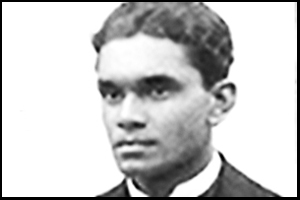Lionel Stanislaus William Edgar de Fonseka (born 27 October 1889) was the 3rd of six children of Mudaliyar Simon Richard de Fonseka. Lionel had his primary education at Royal College and St. Joseph’s College Colombo, and his higher education at Oxford University, UK. (Wikipedia lists his early education at Royal College, while the document reproduced below confirms his time at St. Joseph’s College in 1905)
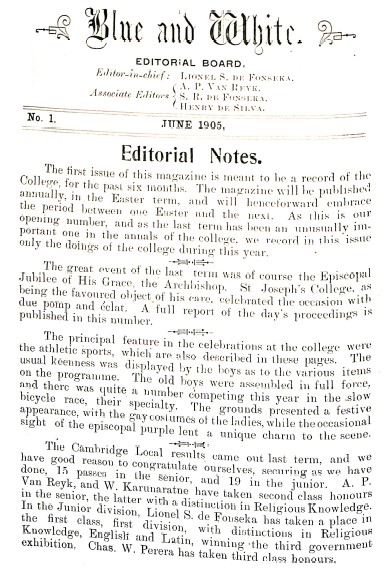 During his time at St. Joseph’s College, the first catholic school established in Sri Lanka (1896), he functioned as the editor of the college magazine, Blue & White. The very first magazine published in 1905 carry his name as the Editor in Chief, and that of his elder brother S. R. De Fonseka as an associate editor. He would have been around 16 years at this time.
During his time at St. Joseph’s College, the first catholic school established in Sri Lanka (1896), he functioned as the editor of the college magazine, Blue & White. The very first magazine published in 1905 carry his name as the Editor in Chief, and that of his elder brother S. R. De Fonseka as an associate editor. He would have been around 16 years at this time.
Lionel had his higher education in Balliol College at Oxford, England, sent there by his father Mudaliyar S. R. de Fonseka. Balliol is one of the oldest colleges at Oxford (founded in 1263) and it is stereotypically known as the left wing college. After his studies he lived and worked in France and Belgium for many years. He is known to have donated a gold chalice to the cathedral of Bruges, Belgium.
It was during his early years in France that he wrote his first book De la Verité dans l’art (1912). Written entirely in French, the book was subsequently translated into English as ‘On the Truth of Decorative Art’ (London A.C. Fifield 1913). The book argued against the corruption of Sinhalese (Sri Lankan) art by Western influence. In later years he wrote many articles to the New Age Magazine, some of which has been reproduced in this website. His seminal work on the Karava Flag came out in 1921, and is referred by many authors.
His second book in French, called ‘Les Eaux de Lumier‘ (1953), about the apparitions of the Virgin Mary to three little children in Fatima, Portugal, came out in 1953. He sent a copy of his book to his brother Ritchie (S.R. De Fonseka Jnr), with an accompanying letter (both now in the possession of the author), where he mentions that sending the book by air mail would cost him ‘a fabulous sum of money, perhaps more than the book is worth’. By the 1950’s, Lionel came and settled down permanently in Sri Lanka, setting up his home down their ancestral properties in De Fonseka place.
Lionel was married to Noel Fernando, daughter of Sir Marcus Fernando. They did not have any children.
Lionel’s collaboration in the renaissance of Afro-American Arts
It was at Oxford that Lionel met and collaborated with Alain Leroy Locke, an American writer, philosopher, educator, and patron of the arts. Distinguished in 1907 as the first African-American Rhodes Scholar, Locke almost single handedly influenced the renaissance of African-American arts.
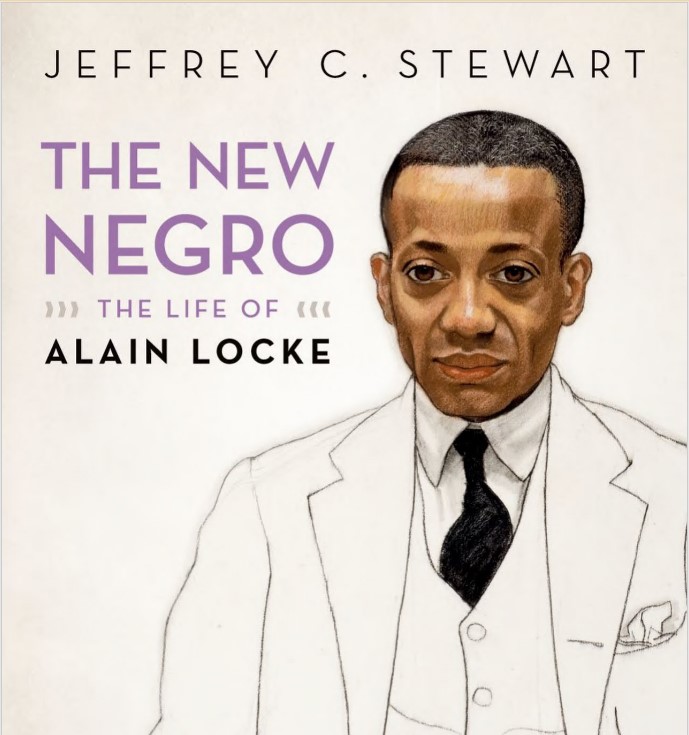 Locke published The New Negro (1925), a collection of writings by him and other African Americans. This would become a landmark in black literature and would lead to the Harlem Renaissance, an intellectual and cultural revival of African American music, dance, art, fashion, literature, theater and politics centered in Harlem, Manhattan, New York City. It is considered to have been a rebirth of the African-American arts and has continued to be an important cultural force in the United States through the decades: from the age of stride piano jazz and blues to the ages of bebop, rock and roll, soul, disco and hip-hop.
Locke published The New Negro (1925), a collection of writings by him and other African Americans. This would become a landmark in black literature and would lead to the Harlem Renaissance, an intellectual and cultural revival of African American music, dance, art, fashion, literature, theater and politics centered in Harlem, Manhattan, New York City. It is considered to have been a rebirth of the African-American arts and has continued to be an important cultural force in the United States through the decades: from the age of stride piano jazz and blues to the ages of bebop, rock and roll, soul, disco and hip-hop.
Lionel’s friendship with Locke went deeper than a casual acquaintance. They were both people of color, fighting to make their presence in the intellectual capital that was Oxford. They collaborated, encouraged and supported each other on their literary pursuits. Once their tenure at Oxford finished, they went their own ways, Lionel settling down in France and Locke going back to the United States. However their collaboration continued, thru frequent correspondence thru mail.
Kristin Mahoney (Associate Professor of Michigan State University), who studied in depth the work and life of Locke, pointed out the close connection Locke had with Lionel to this website. While corresponding with this website, she mentioned the large volume of correspondence Lionel made with Locke, most of which is now archived in the Alain Locke Papers Collection 164, in the Moorland-Spingarn Research Center, Howard University, Washington. The letters are indexed under an incorrect name as Lionel de Fouseka. The letters have been grouped into, no date, 1908-1909, 1910-1911, 1912-1913, 1914-1918, and 1926-1953, indicating the somewhat frequent correspondence in the initial decade.
Writing in his book, The Life of Alain Locke, Jeffrey Stewart mentions that Lionel settled in Thorenc, Alpes Maritimes region of France, and that Locke visited and stayed with Lionel a few times. The second book mentioned here could be ‘Les Eaux de Lumier‘, published in 1953.
‘De Fonseka had some self-interest in luring Locke to France—Locke’s friend was working on a “second book” and wanted Locke to “midwife” this one as he had his earlier one. De Fonseka recommended that Locke come immediately to Europe and stay with him and his wife—traveling from New York to Cannes, bus to Thorenc, Alpes Maritimes, France. Later, he could accompany Locke back to Cannes, spend a few weeks with him there, and then Locke could return to New York on the Rex.’
Back in Sri Lanka
Coming back to Sri Lanka in the 1950’s, Lionel kept writing to many local publications including ‘The Catholic Messenger’ and ‘The Daily News’ newspapers. An article published in the Daily News of 12th march, 2012, listing some of its Well-known contributors of the past, clubs him with the cream of writers such as, Sir P. Arunachalam, J. R. Weinman, Leonard Woolf, E. W. Perera, D. S. Senanayake, Fr S. G. Perera, E. Reimers, and Count de Mauny amongst others.
 Lionel was also one of the early local office bearers of the Royal Asiatic Society, being appointed the secretary in 1923. At its early stages, its membership included the British governors of Ceylon and high civil, judicial and medical officials of the government. The Society began admitting Ceylonese officers in 1916, with the appointment of the President, Sir Ponnambalam Arunachalam followed by eminent local scholars including Sir Paul Pieris and Sir Baron Jayatilaka.
Lionel was also one of the early local office bearers of the Royal Asiatic Society, being appointed the secretary in 1923. At its early stages, its membership included the British governors of Ceylon and high civil, judicial and medical officials of the government. The Society began admitting Ceylonese officers in 1916, with the appointment of the President, Sir Ponnambalam Arunachalam followed by eminent local scholars including Sir Paul Pieris and Sir Baron Jayatilaka.
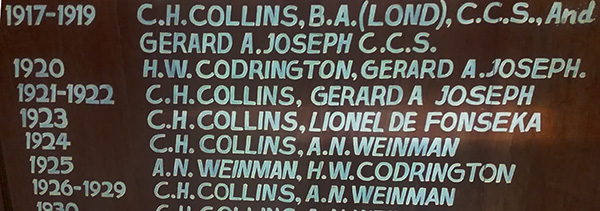
The Royal Asiatic Society of Sri Lanka was established in February 1845 to institute and promote inquiries into the history, religions, languages, literature, arts, sciences and social conditions of the present and former peoples of Sri Lanka. It is one of the oldest learned societies in Sri Lanka with a history of almost 175 years.
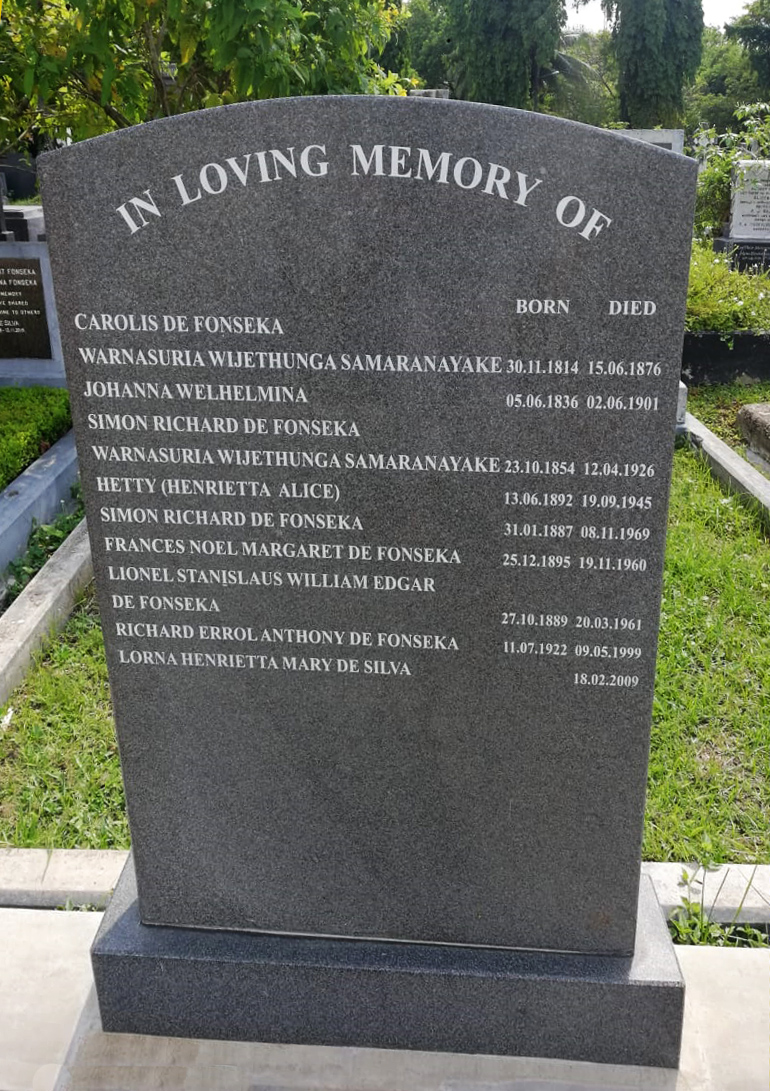 Lionel died on the 20th of March, 1961, and was laid to rest in the General Cemetery Kanatta, Colombo. His wife Noel died a few months earlier, November 1960.
Lionel died on the 20th of March, 1961, and was laid to rest in the General Cemetery Kanatta, Colombo. His wife Noel died a few months earlier, November 1960.

Collected works of lionel de fonseka

Family Heirlooms – Artefacts from the past
Decorative Comb – (Bastian de Fonseka 1770) Head ornaments were part of
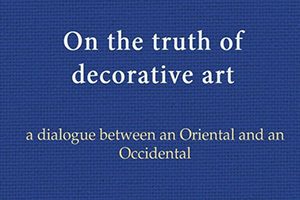
Lionel de Fonseka – De La Verite Dans L’art
DE LA VERITE DANS L’ARTDIALOGUE ENTRE UN ORIENTAL ET UN OCCIDENTALLionel de
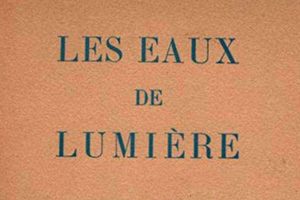
Lionel de Fonseka – Les Eaux de Lumiere
This magnificent and rare book, written entirely in French by Lionel de

Futurism in Food – Lionel de Fonseka
Futurism in Food by Lionel de Fonseka. The need for abstraction and
Reference:
- Wikipedia – Accessed 26th March 2021
- Till the Mountains Disappear – The story of St. Joseph’s College,
Avishka Mario Senewiratne, 2020. - Correspondence with Dr. Kristin Mahoney, Michigan State University.
- Jeffrey C. Stewart; The New Negro: The Life of Alain Locke (Online edition).
- De Fonseka family tombstone, Colombo General Cemetery (Picture courtesy of Roshni De Fonseka).
- COLLINS, C. H., and HERBERT TARRANT. “ANNUAL GENERAL MEETING. Colombo Museum, June 27, 1923.” The Journal of the Ceylon Branch of the Royal Asiatic Society of Great Britain & Ireland, vol. 29, no. 76, 1923, pp. 126–132. JSTOR, www.jstor.org/stable/43483213. Accessed 30 Mar. 2021.
- Complete online archive of The New Age under Orage (1907–1922) at the Modernist Journals Project. (https://en.wikipedia.org/wiki/Modernist_Journals_Project).

